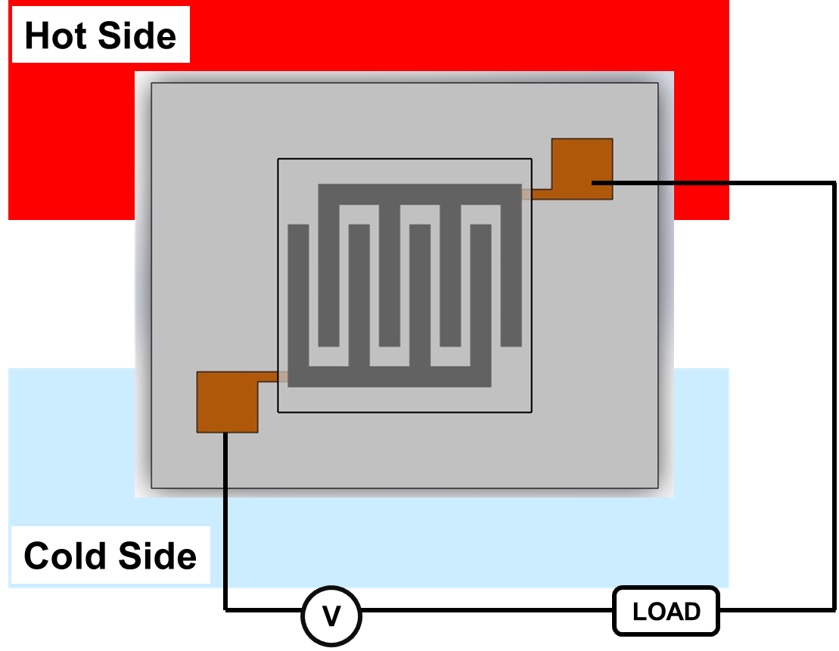
The present invention is a thermoelectric supercapacitor able to produce energy from the dissipation of heat and simultaneously able to store the produced energy. The device is designed on a flexible substrate, and with a 2D planar configuration, and it is composed of two closely spaced nano-structured electrodes separated by a polymer solid-gel electrolyte. The combination of energy harvesting (thermoelectricity) with energy storage (supercapacitance) in a single and flexible device, allied with the low-cost production and possibility to scale up, makes the present technology attractive for several applications such as wearables, smart clothing, health and well-being, sports and transport sectors.
When compared with conventional capacitors and rechargeable batteries, supercapacitors represent a versatile energy storage solution for thermoelectric devices. Supercapacitors present higher power density than batteries but lower than that of traditional capacitors, which allows them to charge faster. Moreover, they present excellent cycling stability and significantly longer life cycle. When compared with conventional capacitors, supercapacitors can power supply the devices for longer operation time due to a higher energy density. Nowadays, available thermoelectric devices are not capable of storing the energy that is generated. Also, thermoelectrics report only a thermoelectric power (Seebeck coefficient) around µV/K. The use of polymers combined with multi-walled carbon nanotubes can reach a power one order of magnitude higher, that is, around mV/K. Also, current studies only report the use of vertical/multilayers prototypes and the use of liquid electrolytes in their composition.
The great innovation is the 2D planar configuration using a solid gel-electrolyte. The planar structure allows maximizing the effective area of the electrodes and makes the energy storage process more effective. The solid-gel electrolyte presents a dual function of separator between the electrodes and of ion donor, with no possibility of leaks, thus improving device safety. Moreover, the technology is produced using cost-effective and non-toxic materials, regarding the electrodes, solid-gel electrolyte and design The combination of thermoelectricity with supercapacitance allows fast charging and higher power when compared with traditional thermoelectric devices.
By combining thermoelectricity and super capacitance phenomena in a single device, it is possible to harvest the waste heat released by the human body or any type of machine, into electrical energy and simultaneously to store it, to be reused to power small electronic devices. The unique characteristics such as flexibility, lightness, non-toxicity, all solid-state materials and possibility to scale up, make the present technology attractive for several applications where heat dissipation may occur, such as: wear, health, transport-sector or electronic sensors industry.
A proteção dos direitos de propriedade industrial é cofinanciada por:






